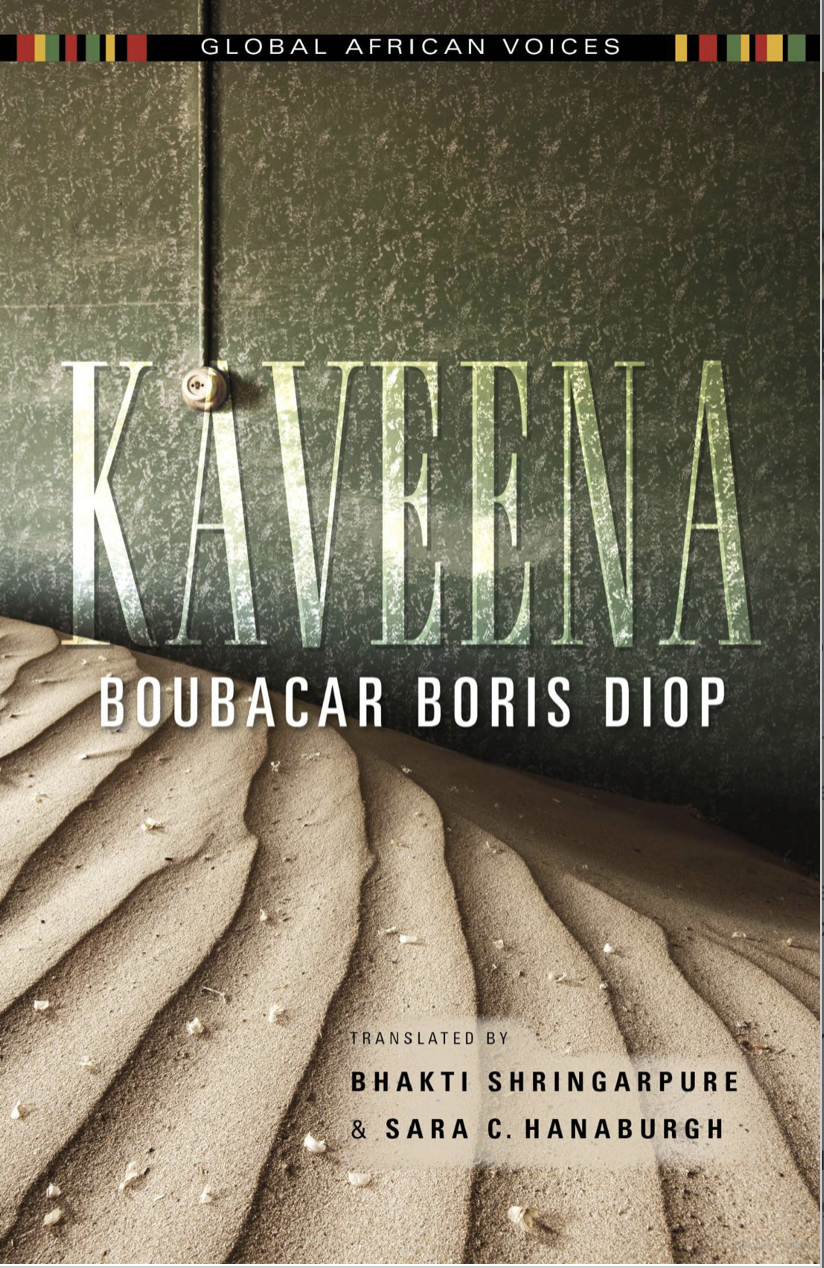Le Temps de Tamango was published in 1981, Les Tambours de la mémoire in 1990. Tamango is a political novel that tackles the 1970s in Senegal; Diop is inspired by South American writers like Vargas Llosa. Les Tambours is Diop’s first foray into magical realism as he shifts his setting to the imaginary kingdom of Wissombo to engage with ideas of freedom, dignity, and revolution.
Diop’s first response to the Rwandan genocide was published in 1997. As Nasrin Qader writes in her foreword, “Written in Diop’s distinctive limpid style, its mood shifting with ease between ironic humor, profound tenderness, deep pessimism, and hopeful promise, Le cavalier et son ombre is divided into three parts, each corresponding to one of the three days that constitute the timeframe of the narrative…. This manner of structuring the novel in threes—three parts, three time frames, three settings—allows the story to wander far and wide and yet safeguards the skeleton upon which narrative composition rests. While many critics have aptly commented on the intricate twists and turns of the novel, it is equally important to account for the backbone that holds the work together. The logic of three both punctuates a spatio-temporal flow—between the past and the future, via the present—and indicates plurality, pointing to its dialogue with One Thousand and One Nights. In Nights, not only is the frame story constructed through three betrayals, but many of the stories also are organized around three figures and three movements. Given that in Arabic the grammatical plural form begins with three, an organization in threes becomes the hallmark of plurality and repetition, also the central features of Le cavalier.“
Qader: “Boubacar Boris Diop’s work is difficult to translate, not because his language is convoluted and opaque but, on the contrary, because it is so clear. This is a quality that he shares with writers such as Camus and Kafka, whom he admires precisely for the ‘crystalline’ quality of their expression. The English translation of Diop’s acclaimed novel, Murambi, drew the attention of the English-speaking world for the first time to his work and his talent. It has also played an important role in raising awareness about the debates on the Rwanda genocide and its attendant history and politics.” Murambi was first published in 2000.
Doomi Golo is the first novel written in Wolof to be published, in 2003. It is a dazzling work, the masterpiece that first drew me to Diop. Like Ludmilla Petrushevskaya, Boris Diop follows a kind of Senegalese skaz tradition that goes further to actively involve the reader in a call and response. The result is a profound experience of both joy and mourning. The text is made up of letters-in-notebooks from the delightful and profoundly astute Nguirane Faye, addressed to his vanished grandson Badou, who is in exile somewhere. Ranging from chronicles of daily life in the fictional Niarela neighborhood of Dakar, Senegal to entertaining fables, from deeply unsettling parables to tales of love and quests, Doomi Golo is both exquisitely distinct from anything I’ve ever read and perfectly relatable, if not “universal,” as many blander works attempt to be.
2006: A novel of civil war, the relentless exploitation of West African resources and the forsaking of so much humanity by Europe, along with a mother’s quest for vengeance after her six-year-old daughter is slain.
2013 (short story collection, not yet translated)
2014 (essay, not yet translated)
2005 (essay): exposes colonial clichés and disinformation campaigns in the mainstream media of France.
2006 (essay): returns to the subject of the Rwandan genocide while also dealing with globalization and “negrophobie” from other angles.













